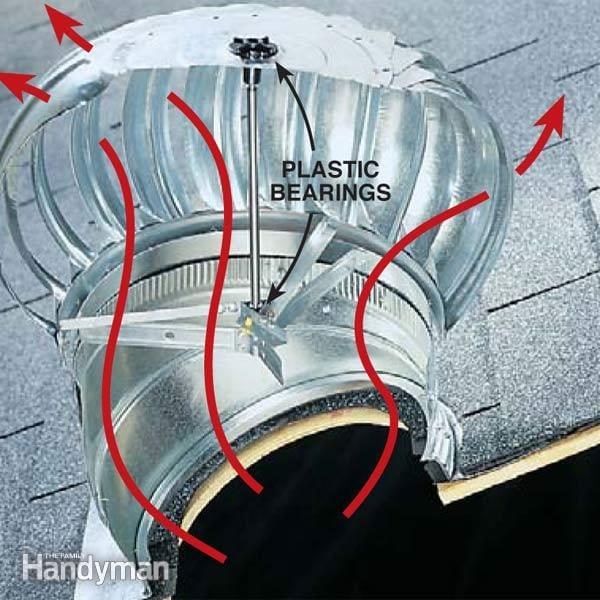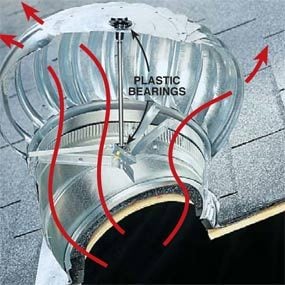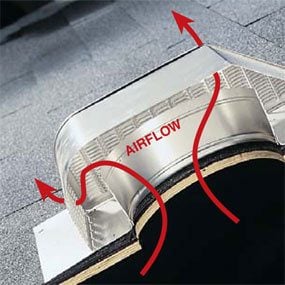Is one type better than the other?

Turbine Vents vs. Flat Roof Vents: Which One Is Best for Your Home?

How Roof Vents Work
All things being equal, wind-driven turbine vents, also known as a whirlybird roof vent, do move more air than flat vents (but only when the wind blows). The question: How much air must be moved? A largely arbitrary rule of thumb that’s been adopted into most building codes calls for 1 sq. ft. of vented area for every 300 sq. ft. of attic space. So if an attic is 1,500-sq.-ft. it must have 5 sq. ft. of vent space, half dedicated for air intake in the soffits and the other half for exhaust on the roof. These can be ridge vents, wind turbines or the flat vents your roofer wants to install.
Why Attic Ventilation Matters
Good attic ventilation is important for preventing ice dams in the winter. It also keeps your home cooler in the summer, vent moisture that finds its way from the living spaces of your home into the attic and helps shingles last longer. The fact is, it’s hard to overventilate an attic—generally, more is better.
Turbines vs. Flat Roof Vents
If you don’t like the looks of wind turbines, don’t be afraid to use the flat vents; just be sure to follow the 300-sq.-ft. rule. But if you want to use wind turbines, buy high-quality ones that have permanently lubricated ball bearings or plastic bushings in the spinning mechanisms. Usually, it’s the cheaper units with metal bushings that will squeak and eventually drive you (and your neighbors) out of your mind on windy nights.

Wind-driven turbine vent
Wind-driven roof vents will pull more air from the attic, but only when the wind is blowing.

Flat roof vent
Flat roof vents have no moving parts to break or squeak but don’t vent as much air as wind-driven vents.




















